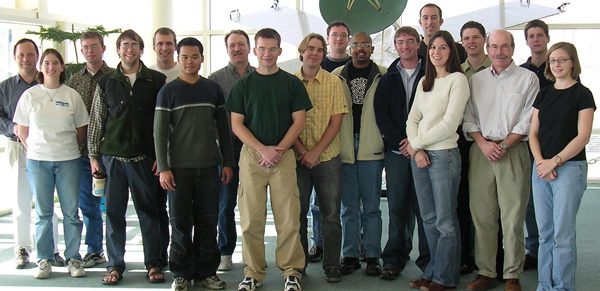Our Student Team

Because of the length of the New Horizons mission, new students have joined the SDC student team, while others have graduated and gone on to the next step in their careers. (Courtesy LASP)
The Student Dust Counter (SDC) was funded as an education and public outreach project for the New Horizons mission, a NASA mission to Pluto. SDC is the first science instrument on a planetary mission to be designed, built, tested and operated by students. An original team of 20 undergraduate and graduate students has evolved over time, with new students brought into the fold as the nearly twenty-year project has proceeded from development through launch and into its ongoing mission phase.
Most space instruments are designed, built, and operated by professionals who have worked in the field for decades. The goal of the Student Dust Counter (SDC) is to give students a head start on experiences they will encounter as professionals: hands-on work designing, testing, calibrating, and operating an instrument; as well as giving formal presentations to professional NASA review boards during the course of mission development. SDC is not just a scientific instrument; it’s also an investment in the scientists of tomorrow.
The Laboratory for Atmospheric and Space Physics (LASP) has a long tradition of student instruments, starting with the Solar Mesosphere Explorer and most recently with SNOE, the Student Nitric Oxide Experiment. LASP recruits both undergraduates and graduates from the University of Colorado to help with instrument design, construction, maintenance and programming.






